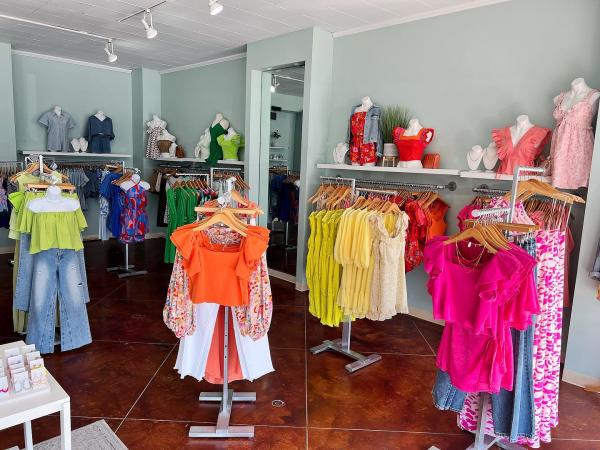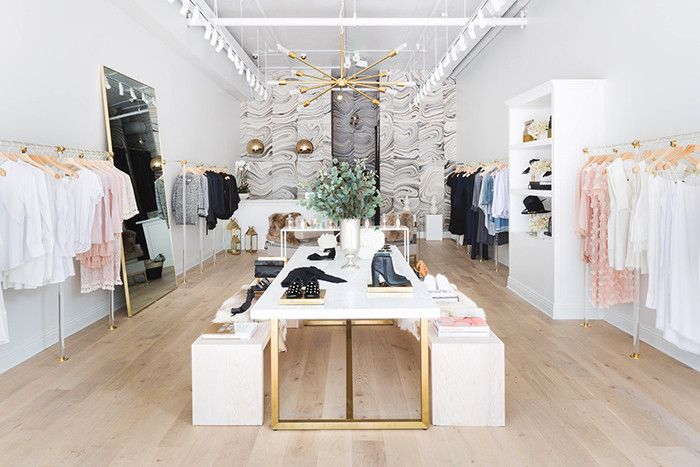Discovering the Advancement and Effect of Clothing on Modern Style Trends
The advancement of clothes has actually significantly influenced modern-day style trends, merging historical criteria with cutting-edge advancements. Legendary figures like Coco Chanel and Yves Saint Laurent transformed the apparel industry by presenting principles that focus on comfort and availability, which remain to reverberate today. Meanwhile, technological strides in locations such as 3D printing and clever fabrics are redefining layout possibilities and customer experiences. In addition, the growing focus on inclusivity and sustainability is reshaping industry requirements. As we consider these diverse influences, one have to doubt how these aspects collectively redefine fashion's role in reflecting and forming contemporary society.
Historical Style Influencers
In the tapestry of style history, particular figures have actually left an enduring mark, shaping the fads and styles that specify entire periods. Coco Chanel, an advanced designer, redefined women's style by presenting comfortable, stylish garments that departed from restrictive corsets.
Elsa Schiaparelli is another crucial number, renowned for her avant-garde styles that incorporated surrealist art, working together with Salvador Dalí to develop whimsical items that tested conventional looks. Her innovative use of color and strong patterns reverberates in modern style. Yves Saint Laurent, meanwhile, equalized haute couture with prêt-à-porter collections, bringing runway styles to the masses and establishing a criterion for contemporary ready-to-wear lines.
These visionaries, to name a few, not just reinvented fashion in their times however also established enduring trends that reverberate in today's garment industry, providing a structure whereupon modern designers remain to innovate and build. Their traditions emphasize the importance of creativity and daring in vogue's ever-evolving story.
Technical Advancements in Fashion
In the middle of the dynamic landscape of the fashion business, technical innovations stand at the center of innovation, reshaping how developers create and consumers involve with style. The combination of 3D printing has transformed style processes, enabling designers to try out complex structures and sustainable materials that were previously inconceivable. This technology facilitates quick prototyping, lowering waste and quickening manufacturing times.

Smart textiles, installing technology right into textiles, are also changing the sector. Developments like temperature-regulating and self-cleaning fabrics use enhanced performance and convenience. Wearable modern technology, including functions like health and fitness tracking and communication, adds a brand-new measurement to fashion, merging appearances with practicality.
Social Changes and Style
As technological advancements continue to improve the garment industry, social shifts are just as significant, redefining design and consumer preferences. In recent times, the surge of social media sites systems has actually sped up the dissemination of global fashion fads, permitting varied social impacts to exist together and assemble. This digital interconnectivity has facilitated the rapid exchange of concepts, bring about an extra inclusive and eclectic analysis of style that reflects the complex nature of modern culture.
Social understanding and recognition have actually prompted designers to attract motivation from a broader spectrum of historical and ethnic contexts, integrating traditional concepts with modern visual appeals. This combination has caused style that resonates with a bigger target market, promoting a feeling of identity and belonging throughout various demographics. Additionally, the raising need for personalization has actually driven brands to offer personalized options, making it possible for consumers to share uniqueness while reflecting their social heritage.
Furthermore, changing societal worths have influenced fashion, with inclusivity and variety becoming main themes. The market has started to embrace designs and influencers of numerous body types, ethnicities, and gender identifications, difficult conventional elegance standards. This makeover underscores the power of social changes fit the future of style, as style ends up being an extra genuine expression of cumulative and personal identification.
Sustainability and Modern Layout
While the fashion business remains to develop, the important for sustainability has come to be increasingly urgent, affecting modern-day design methods. This change aims to attend to honest factors to consider and ecological problems, leading to a reevaluation of conventional production techniques. Developers are currently incorporating sustainable materials, such as natural cotton, recycled polyester, and eco-friendly fabrics, into their collections, decreasing the environmental impact of style. The rise of slow fashion, which highlights high quality over amount, urges customers to why not try these out spend in classic items as opposed to transient trends.
Moreover, contemporary layout is characterized by its development in reducing waste and promoting circularity. Strategies such as zero-waste pattern cutting and 3D knitting are gaining grip, enabling developers to develop garments with marginal fabric waste. In addition, brands are taking on transparent supply chains, making sure liability and cultivating customer count on. This approach not just alleviates environmental influence yet likewise enhances the social duty of style residences.

Future Trends in Fashion

Sustainability will proceed to be a driving force in forming future fashion trends. The market is increasingly taking on environment-friendly materials and honest manufacturing techniques, reacting to an expanding consumer need for responsible techniques. Developments such as bio-fabricated products and closed-loop recycling systems are readied to redefine just how clothes is generated and taken in, reducing ecological effect while maintaining style and quality.
Social shifts, including the rise of inclusivity and diversity, will additionally play a crucial function. As society becomes a lot more aware of social problems, fashion is anticipated to become a platform for expression and change. Designers will likely focus on creating collections that mirror a more comprehensive variety of experiences and identities, championing depiction and accessibility.
Final Thought
The advancement of clothing dramatically impacts modern-day fashion patterns, where historic impacts combine with modern designs. Key figures like Coco Chanel and Yves Saint Laurent have actually redefined design, while technical innovations such as 3D printing and smart textiles broaden innovative possibilities. Cultural shifts in the direction of inclusivity and sustainability urge brand names to adopt ethical practices and embrace variety. This recurring evolution highlights style's function as a mirror to social worths and technical improvement, recommending a future abundant with advancement and inclusivity.
The development of apparel has dramatically affected modern fashion fads, combining historical precedents with cutting-edge technologies.In the middle of the vibrant landscape of the fashion sector, technical improvements stand at the leading edge of development, improving exactly how designers develop and you can try this out customers engage with fashion.While the fashion industry proceeds to develop, the critical for sustainability has actually become significantly urgent, influencing contemporary layout methods. As sustainability becomes ingrained in contemporary layout, it paves the way for an extra accountable and conscious style industry.
The development home of clothing dramatically impacts modern-day fashion fads, where historical impacts combine with contemporary styles.